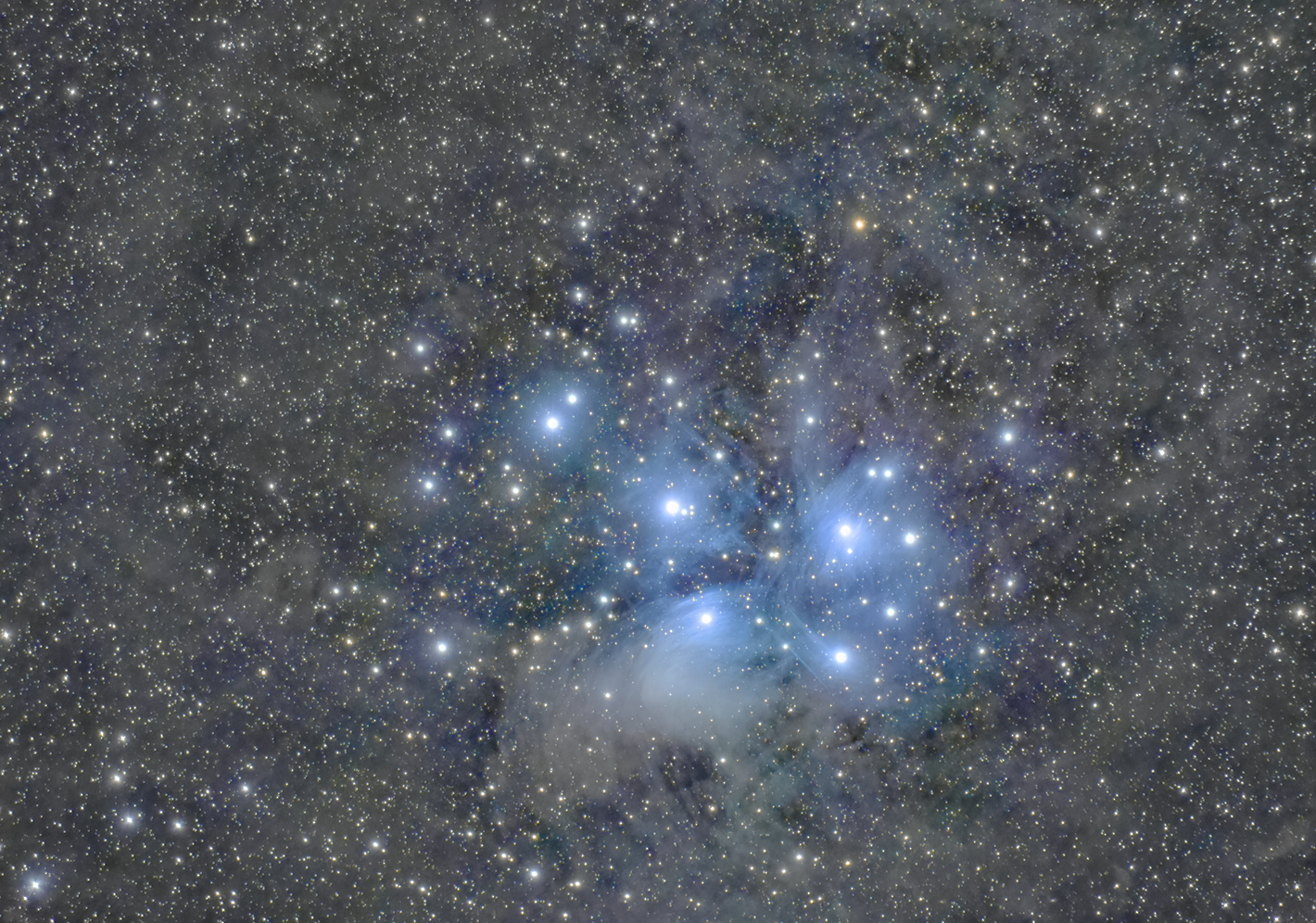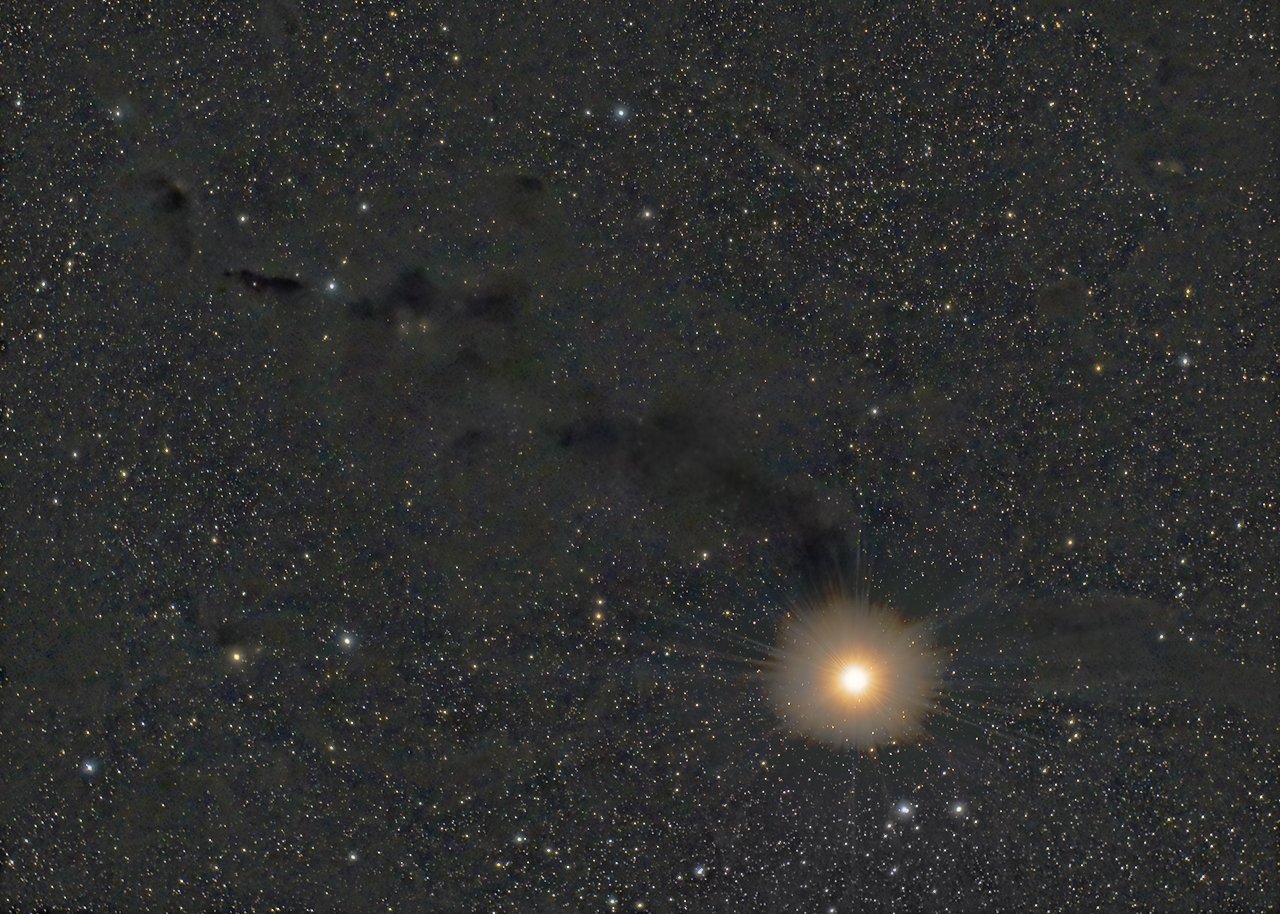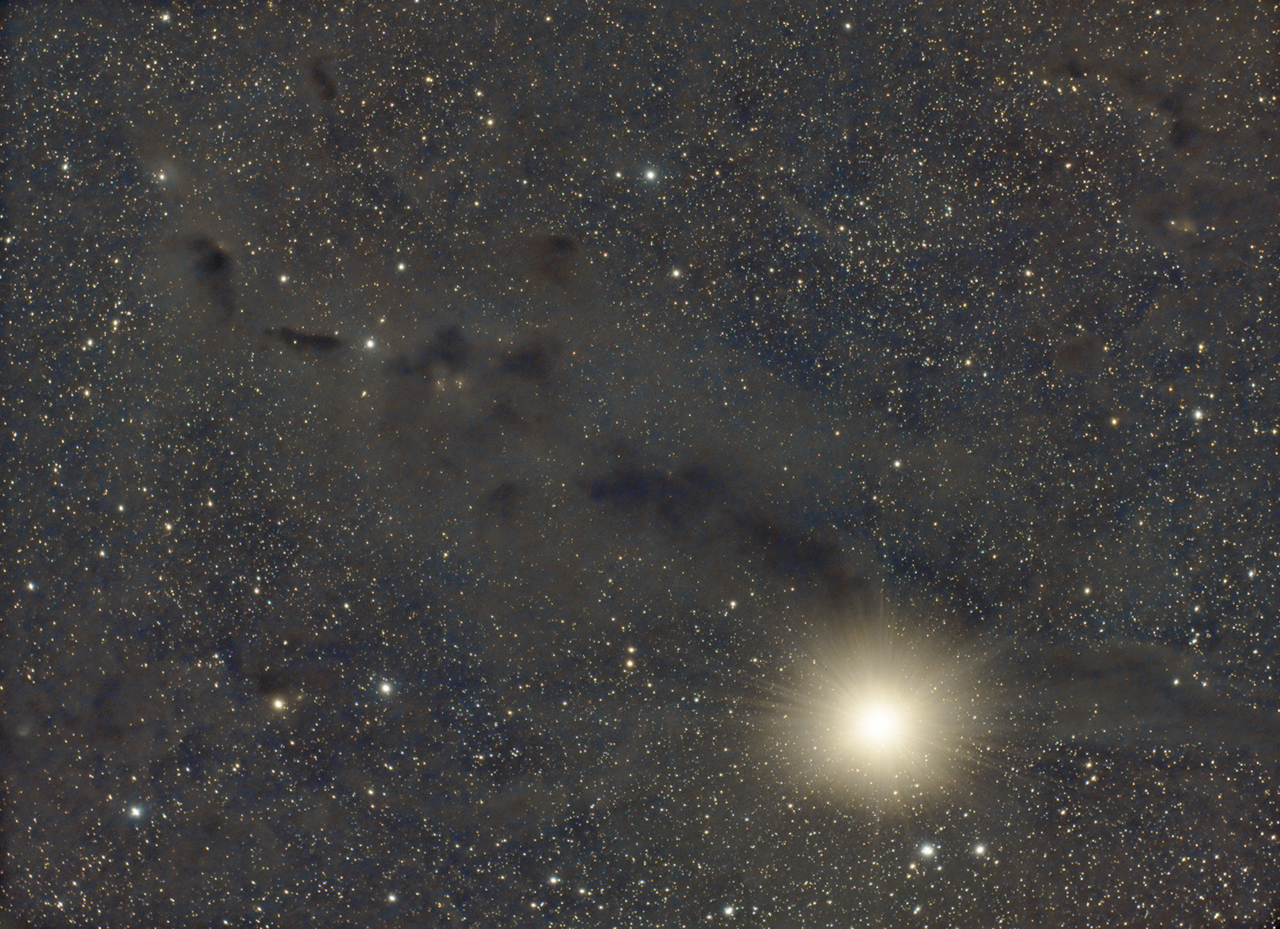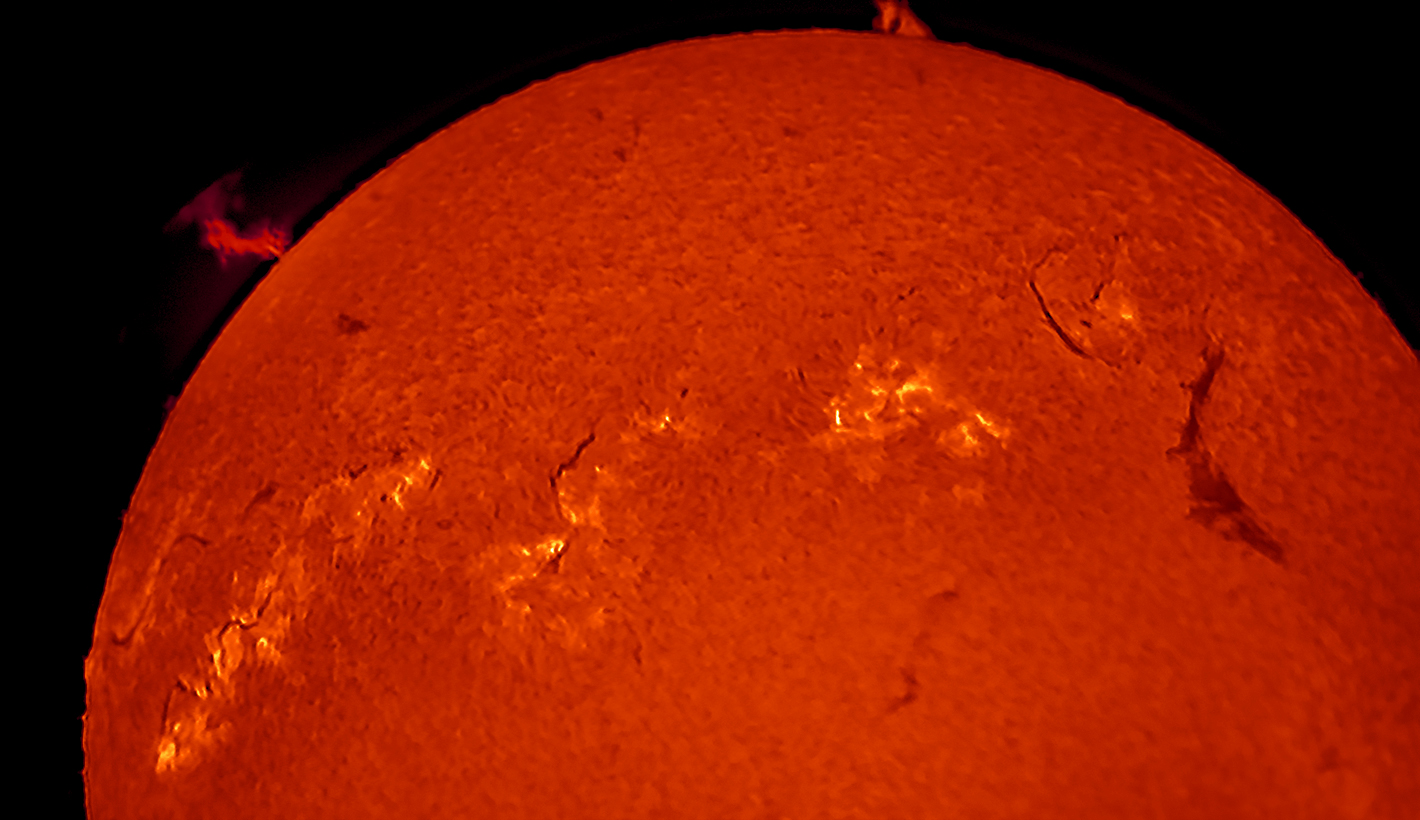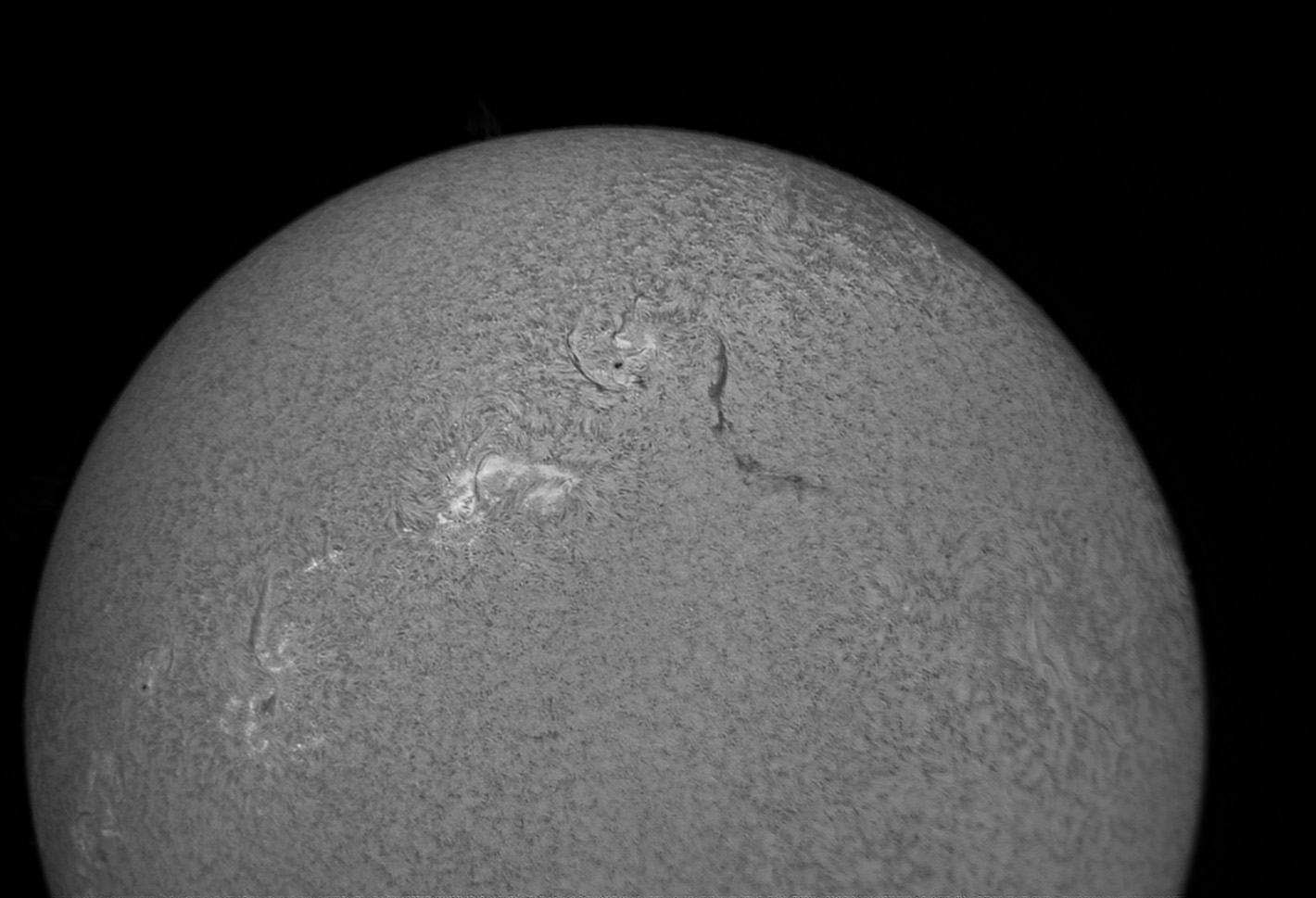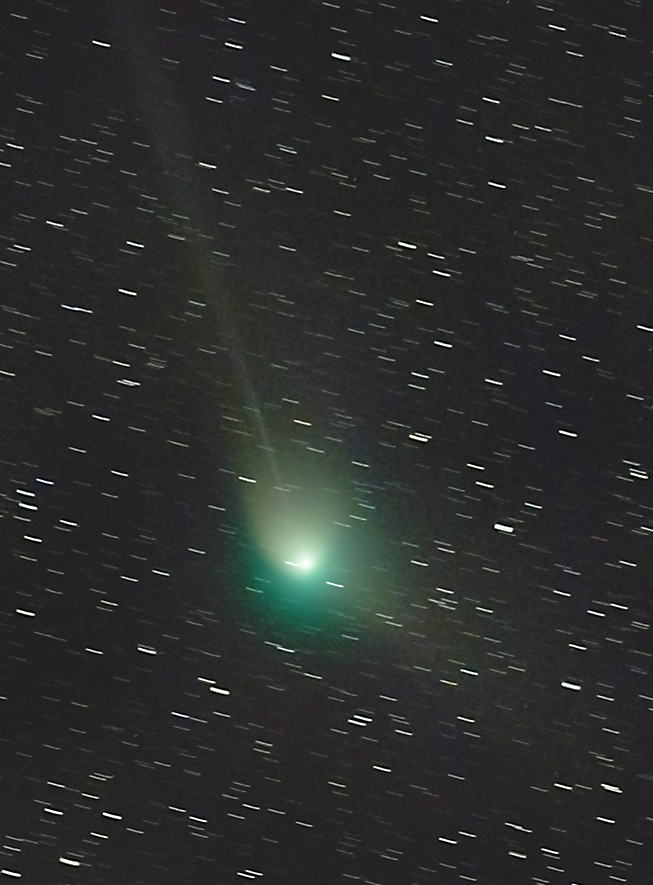The Starry Night, 247 :: home :: |
"Tracker" or "Equatorial Mount"?
1/22/2023. The TMB92SS with its robust focuser is probably right up against the recommended weight limit of the SkyWatcher Star Adventurer (henceforth, "SWSA"). It is worth making it work because the only alternative in the near term is demounting the AT10RC in favor of the TMB and moving the A-P mount whenever I want to use the small refractor anywhere except the back yard. I could also buy yet another (not-quite-so-lightweight) mount, a solution which is not going to happen unless (1) it is absolutely necessary and (2) a screaming bargain appears. If the TMB92SS (it's very heavy for its aperture) can be brought to a secure balance, then I have an excellent, highly portable rig (I'll still favor the 500mm Rokinon for the eclipse out of airline concerns). I first mounted the TMB on the SWSA using a short Vixen bar; it needed a longer rail to permit balancing in dec. When I went to get the rail I kept in the downstairs shop (it's from the Lunt 60), I saw right beside it a neglected, home-made, minimal Losmandy D plate made from a single piece of 1/4-inch aluminum. It weighed almost exactly the same; I thought the D would be easier to work with. In fact, it seems to work just fine under the TMB on the SWSA. The rig still needed an extra counterweight. Several schemes came to mind for that. Among them: drill some steel stock (eBay), make a bushing so that my lightest LXD counterweight can be used on this smaller shaft, cut and turn some heavy-walled aluminum tube stock to fit the outside of the original counterweight, or attach the lightest LXD counterweight to the original counterweight and let the original's bore and set screw secure both. I adopted that last idea and it works fine. There are several fiddly bits about the whole outfit, some conflicts here and there that need spacers or longer bolts or a shim or whatever, but it's ready for star trials. I did a 12-frame stack of the Pleiades while they were still in the trees as a plausibility check and then turned the kit loose for 1h51m of 30-second exposures with the R6 at ISO 3200. Here's a quick stack of the 221 native Canon CR3 files with no calibration:
While I worked on that photo, I kept the TMB92SS aimed at Mars and the Taurus molecular cloud. That worked out well, too. I wondered what I was giving up by not flat-fielding properly, so the morning after, I exposed a dozen flats in various directions and orientations under a blue sky. I expected the flats to open up a bit more real-estate on the sensor, which they may have done but only very slightly. What the flats did was improve tonality and make the left side of the histogram more useful everywhere in the practically illuminated portion of the frame:
183x30s. Uncalibrated.
Same 183x30s. DeBayered and Flat-fielded.
That is such a remarkable improvement that I've ordered a tracing panel to use as a flatfield panel and a USB power bank to keep with it (which will also be useful for the phone, tablets, and the mount).
SWSA fiddles (photos by and by):
To avoid retooling the declination adjustment platform (I hesitate to call it "the dec axis" although that is what it is), try putting the 105 on a decent ball head and mounting it without the dec arm, counterweights, adjusters, etc. I might be making that lens harder to use than it needs to be. Some residual instability comes from having too much weight too far extended. Since it's not likely that I can take much weight off, I am thinking some kind of truss/brace will help reduce the jittering. Eventually. Trying off the shelf upgrades first.
1/25/2023. I can see I am going to use the shit out of this thing -- my expectations for it were much too low -- and the universal opinion seems to be that to use this tracker with anything beyond a camera and short lens, the William Optics base is a wonderful upgrade. In for a penny, in for a pound. Considering the time and effort and sunken costs of any astrophotography, if the base lets me get more and better stuff, then I'm foolish not to use one. It's on the way from Agena. The relative ease with which the little mount accommodates the TMB92SS suggests that I could use the Lunt 60 on it if I reverted that instrument to its original form. It's probably worth un-Frankenscoping it at least until the Sun clears the pines when I can mount the long-focus solar kit piggyback on the R-C. For that matter, I wouldn't mind trying the front etalon and the B600 blocking filter on the TMB (there being no budget for a Quark at the moment), but that option has its own mechanical challenges. A lot of possibilities just opened up. The Lunt 60THa does seem light after the TMB92SS. With the ASI178MM and a B600 blocking filter, the Lunt balances well both with and without the double-stack front etalon. According to the forecast, tomorrow's daytime sky should be very clear but with dreadful seeing. That's good enough for a look.
1/26/2023.
Best 100 of 500
That's pretty much the full frame. The Sun measures 2900 pixels and today's Sun subtends 32.5 arc minutes or 1950 arc seconds. That means the image scale is 0.67 arc seconds per pixel on the ASI178MM chip. Ergo, as configured right now, this is a 740mm imaging rig. There's a barlow Things did not actually go very well: too much wind rendered life cold and the image very shaky, not enough battery power, too many clouds, dreadful seeing, and not enough patience. At the preview scale above, fine, but it's not what it needs to be. It's a start.
1/27/2023. Less wind, more patience. Without the barlow glued into the solar snout, the perihelion Sun barely fits on the chip. (Try a compressor?) Full-sun imagery really needs two frames. Single-stacked exposures without the barlow can be as short as 200 microseconds at reasonable gain (they can be well under a millisecond with the barlow in place). The difference in mass is significant; the mount is far less prone to undamped bouncing when touched (or breathed upon). I messed some with the tilt of the internal etalon; a decently flat field with decently narrow spectral performance is readily available but does still require some local adjustments (a flat made in post by blurring, inverting, and layering in with soft light comes close but still needs tweaks). I think the anti-Newton's-rings tilt is excessive for this configuration. Take some of that out and see if the lower corners of the frame sharpen up. Focus with gamma set for maximum contrast; image with gamma disabled. Some things remain the same. Slow motions: the dec fine adjustment is, in a word, fine. For RA adjustment (or a fair approximation thereof) when doing video clips, the azimuth adjustments of the SWSA serve nicely. Having discovered that use of the azimuth screws, I am very glad that there is a William Optics base on the way. Single-stacked, 200 of 2000 frames
For more on sun gazing progress. See "Staring at the Sun," p 105.
Earlier this morning (midnight-ish), I gave the comet a try with the TMB92. Twice. I collected several 30-second subs before realizing that I had bumped the mount and disturbed the polar alignment. Maybe enough to matter, maybe not. But I realigned and did 24 more. The comet was easy and big in the 14x70's, colorless and tail-less, but bright. That said, I saw no sign of it without the binoculars. The finished photo is a bit dull in our bright and humid skies, but here it is anyway.
Notes on using the TMB92 on the tracker: remember that it matters which way the TMB92 is pointed in the cradle because the refractor is not centered on its D-plate; it is much better balanced with the knurled knobs on the same side as the D-clamp knob. The other way around, balance is a real bear, especially high in the north with the OTA on top of the polar axis -- in that situation, the wight of the off-center OTA dominates, and there is no way to adjust for it. I went to bed dreaming up secondary counterweight schemes, then this morning remembered the asymmetry of the plate. For both solar and deep-sky imaging, methods of producing useful flats need to be found. A good flat makes a huge difference. Unfortunately, so does a bad one. Later that same night: from a tiny fragment of the south side yard, the comet clears the pines by about 10:15. The night is much clearer than last night (but the Moon is a little closer and brighter). I went ahead and started collecting frames early, but the best will come shortly after midnight when the Moon sets and the comet is higher. (Putting the OTA on so that all knurled knobs are on the same side does produce vastly better balance.) In the end, I collected 242 frames, and got nothing worth showing off. The tail may be dimmer than just a few nights ago; the sky brighter; something made these disappointing. It didn't matter whether I combined 10 or 100 at a time, with comet-alignment or not. Also, focus shifted toward the end of the session. It abruptly went soft and then stayed pretty much the same for the rest of the exposures. I actually trashed 240+ subs; that's how dismal they were.
1/28/2023. The William Optics base is here (Agena delivered it before the USPS tracking even started!). It is definitely steadier than the stock support, and polar alignment is less of an adventure. The simple push pin arrangement for altitude is less convenient than the stock latitude adjuster's geared adjustment, but it works more smoothly and holds better once you get it going. The azimuth adjustments are essentially the same, though with more range. The clamps in altitude and azimuth are easier to use, and unlike the stock base, they introduce no motion when tightened. With the TMB92 up top, I grabbed some cloudy starfields way up north (similar to last night's aim). Way, way less slop invited easier and therefore better focus. There is still some vibration when touching the camera or the lens, but it damps in about half the time. I should try this mount on a Linhof just to isolate the remaining flex and compare it more directly to the late, only occasionally lamented LXD-55. I made an Arca-Vixen adapter so I can leave the ADM D- and V-plate saddle in place on the declination adjuster. With the extra counterweight, the added height is less of a concern. I'm toying with the idea of putting a Vixen rail under the TMB92 since I don't entirely trust the D-plate knockoff I have there now. At the moment, I think, "Let the problem come to you; don't go looking for trouble."
...and on 2/01, I thought, "Yeah, well, sooner or later you're gonna let a few thousand dollars of optics and electronics hit the ground if you don't do something about that. It's inevitable." The 'problem' that would come to me would be damned expensive. So I spent ten minutes in the shop and put the TMB92SS on a Vixen rail rather than the slightly out of spec D-plate knockoff; it may work better, but I will surely sleep better. Also today, Amazon handed me a tracing box -- that is, a flatfield panel by another name and 5% of the price -- and a couple of rechargable USB power banks for this and that. Not so slowly and not so surely, the kit continues to come together. The tracing box is maybe just big enough to work with the 10-inch RC, so it is somewhat excessive for the TMB, 105, etc. Maybe it's manageable just the same; there are, of course, smaller ones out in the Amazon watershed if portability proves to be an issue. For the record, the current one is an A4 tracing box; A5 or A6 would be better for the small glass. First experiments were... mixed. But they were "first" and better is to come.
:: top ::
|
© 2023, David Cortner
